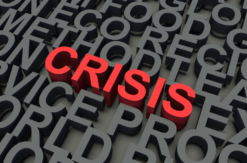Can your Organization Survive a Crisis Event?
Today, every organization faces a variety of risks and threats from disasters and crises that provide significant disruption to their normal operations and overall mission. Crisis management is a strategic governance issue and requires every organization to manage their vulnerabilities and protect their critical assets – their people and property. This requires the ongoing process of preparing, communicating, training, and testing plans prior to a crisis, disaster, event, or situation, in advance of actual need. One thing is certain, your employees and their families, clients/customers, suppliers, and the public expect your organization to protect them from known threats.
A comprehensive preparedness program represents a comprehensive system of processes, policies, and procedures that guide an organization through a crisis and ensure its ability to resume operations quickly, with minimal disruption to its core mission. The Red Cross revealed that it responds to over 70,000 disasters annually in the United States. These events may be limited to the organization, such as a fire or death of key leadership in an accident. Natural disasters include everything from severe storms to earthquakes and floods. National emergencies range from acts of terrorism to a pandemic.
According to the Federal Emergency Management Agency (FEMA), more than 40% of businesses never reopen after a disaster, and for those that do, only 29% were still operating after two years.
Any delay or indecision in a crisis can increase the impacts of any disaster and places the organization at a higher risk. Just as significant are the organization’s liabilities. Increasingly, organizations and senior leadership are being held accountable for disaster- related damages because the crisis was deemed to be foreseeable. Failure to plan is negligence.
A properly designed and implemented preparedness program will protect an organization in any type of crisis and mitigate or even prevent impacts. The process of developing a program begins with a vulnerability analysis and an operational impact analysis. Results from the analyses will help leadership develop the appropriate strategy, based on findings. Once a strategy is adopted, recovery plans tailored to the organization can be developed. The final stage of implementation includes communications, and testing to diagnose and correct any weaknesses or omissions in policies, plans and procedures.
Everyone has a role to play in a crisis. Some are strategic. Some are tactical. Everyone will need training, not only on the overall response, but also on their roles during the event. It’s not enough to simply assign roles to various individuals throughout the organization. Only after roles are tested through various scenario-based exercises can the organization be sure it is ready for a future crisis or disaster.
In summary,
• Organizations are susceptible to an increasing variety, frequency and severity of disasters and crises.
• Disasters and crises are foreseeable.
• Organizations with mature preparedness programs perform significantly better in a crisis and recover sooner than those that don’t dedicate time and resources to this critical mission.



